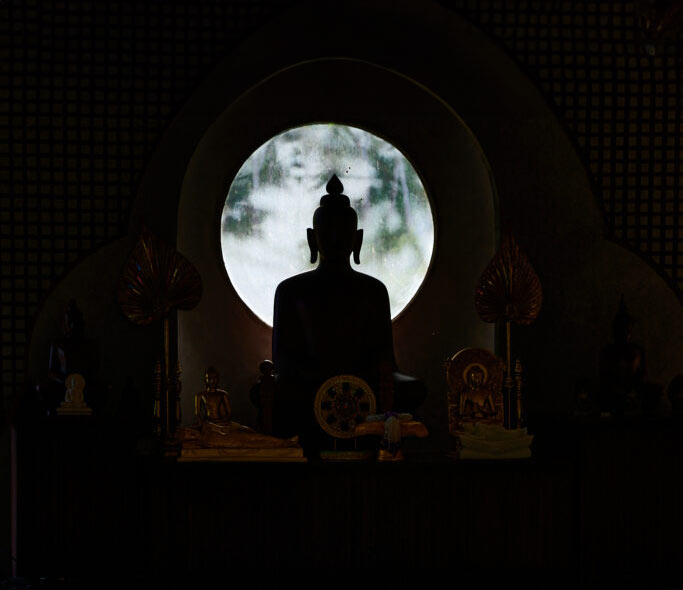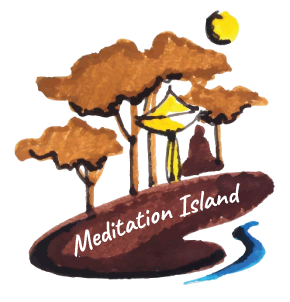We have heard the teachings on the abandoning of the fetters of the Sotapanna that the Sotapanna is the one who abandons: 1. Sakkaya ditthi. This definitely means abandoning the wrong view about the self, which is a gross thing that is present in ordinary people and is less so in good people who aspire to practice Samatha and Vipassana, until they begin to abandon wrong view momentarily, which will eventually lead to abandoning wrong view. 2. Vicikiccha: hesitation and doubt, focusing on hesitation and doubt about the Triple Gem. Some people are confused as to why it is bad if we have hesitation and doubt. Many times, hesitation prevents us from easily believing things according to what others say, such as if someone deceives us or even does not deceive us, because they think that teaching is correct, this teaching is incorrect, because in many schools, wherever we go, we hear only stories that it must be this way to be correct, we must do it this way only. Hesitation and doubt create self-control and not believe things easily. Isn’t it good? If you look at it this way, it is definitely good because that is a form of right reflection to carefully consider to see the truth for yourself. Believe me, everyone thinks that they are right. If he said he was wrong, would he still do that? But the doubt in this fetter focuses on the doubt in the Buddha, the Dharma, and the Noble Sangha. Because the Sotapanna is the one who enters into practice according to the Noble Eightfold Path, gradually purifying the defilements until seeing for himself that all sufferings are gradually becoming lighter. He does not think that he is this or that because everything is about suffering. When the suffering decreases, the mind becomes more stable and begins to see the truth according to reality until seeing for himself that the self, the self that he has misunderstood all along by creating the self, does not really exist. It is only a feeling created by ignorance. When anyone reaches this point, we can imagine for ourselves that he will definitely have no more doubts about the Dharma because practicing the Dharma has led him to freedom from suffering. And he will know for himself automatically that there could be Dharma teachings if there was no wisdom of the Buddha’s enlightenment. This principle, which is the logic of cause and effect, is natural for noble persons. And freedom from suffering truly occurs in those who practice the Dharma. Here, it will allow those who come into contact to understand clearly by themselves without having to listen to anyone else’s explanation. This is the origin of the Buddha asking Sariputta that Who do you think is a Sotapanna here? Sariputta replied, I think that those who practice the Noble Eightfold Path are the Sotapanna. Because the Four Sotapanna characteristics clearly state the 1st-3rd points are those who respect the Buddha, the Dhamma, and the Sangha firmly because they have seen it for themselves. This is the result that arises in the minds of all noble individuals, which the Lord Buddha well knows. It is not a follow-on respect. As for the Four Sotapanna points, the Fourth point is those who have unbroken precepts, tainted, and tainted. It is precepts that are not touched by view. This comes from practicing the Path points 1 and 2 until wisdom arises. They have precepts with wisdom, not thinking that keeping precepts will be good and will take them to heaven. That is still touched by view. Therefore, the Four Sotapanna points are definitely the result that arises in noble individuals at all levels. If they practice until they feel that “they are liberated,” but still hesitate in the Buddha’s teachings, thinking this is right, this is not right, is this really what the Buddha said? The Fourth Noble Path must be wrong? Because what “I” have achieved is not like this? If so, I’ll have to hire an outsider to see who is more likely to be wrong, between the disciples and the Lord Buddha. If they are really wrong, today there won’t be a single Arahant at all. Because it has already been 2,600 years. Or were the people who said that an Arahant? By having self-realization? Therefore, doubt is not just daily doubt or doubt about worldly things like science and mathematics. But it is hesitation in the Triple Gem. As for point 3, “Sīlapataraparamasa”, it is something that people follow often, believing that doing this is good, doing that will release suffering. These things will disappear from the hearts of those who see the truth. Because those who see the truth will see that no matter what they do, no matter how much, they cannot make the aggregates, which are in a state of suffering, become happy. So take care of them as much as you can because they only deteriorate. Don’t even mention maintaining them. No matter how much you adjust the environment to make them splendid, no matter how much you change your name, number, or direction, the aggregates can never escape from the state of suffering. There is only the practice of letting go of clinging to the aggregates. That is when true suffering can be released. So your own imagination must be able to say that No one would waste their time doing something useless like spitting on an ice cube and then freezing it to eat. These are the three of the ten fetters that can be abandoned by the Sotapanna. 2013-06-14
Sotapanna abandons doubt (vicikicchā).

